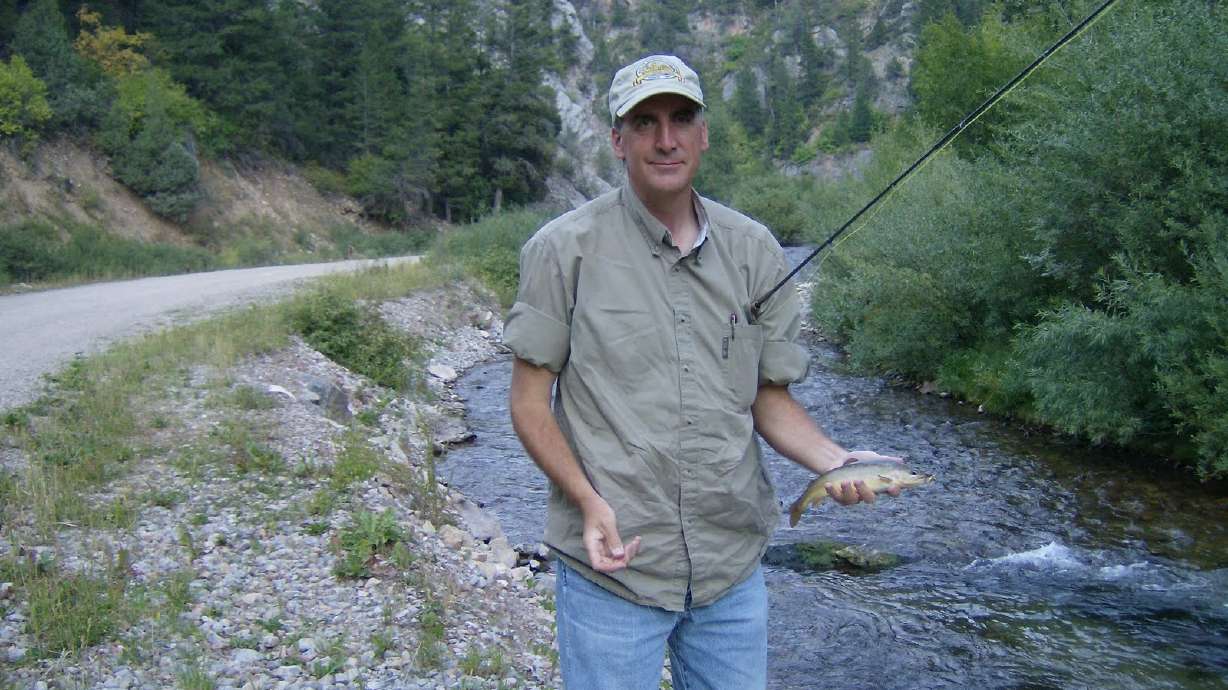Estimated read time: 5-6 minutes
This archived news story is available only for your personal, non-commercial use. Information in the story may be outdated or superseded by additional information. Reading or replaying the story in its archived form does not constitute a republication of the story.
SALT LAKE CITY — Beginning fly anglers are often overwhelmed with all there is to know about the sport. However, you do not need to carry every known fly pattern, three different rods, two types of fly lines, a daypack full of gadgets and how to match the hatch books. You do not need to know how to cast a fly line 60 feet or more, and you only need to know three knots.
By taking a minimalist approach, beginners and veteran fly anglers can simplify their experiences and find great pleasure in the pursuit of trout.
Drop some of the 'stuff'
Fly anglers are notorious for wearing a vest, chest pack, and even a daypack loaded down with fly boxes and flies, leader material, different spools of tippet, portable fly-tying kit, hemostat, fishing net, hatch chart, knot tying tool, strike indicators, split shot, sunscreen, mosquito spray, and clippers (just to name a few items). They also pack waders, boots, special wading socks, wading belts, fishing gloves, a hat, rain gear and neck bandannas.
While many of these items may be necessary, many fly anglers carry too much of it mainly because they do not take the time to clean out their vest or chest pack periodically, or because they think they just might need it sometime.
By taking inventory of what you use the most and dropping some of the items never used, you can limit the bulkiness of a vest or chest pack and the time it takes to dig around looking for the items you really need.
Minimalist approach
The minimalist approach to fly-fishing is not for everyone. Some may adopt it as their standard way of pursuing trout, and everyone should try it periodically just for the simplicity and pleasure.
Really, all you need to enjoy a day of fly-fishing — especially in the summer and fall months when the weather is nice — is a good fly rod and reel (reel is optional if you use Tenkara outfit), floating fly line, basic flies in one fly box, a good leader, tippet material and some clippers. If your close-up eyesight is getting bad, a good pair of folding reader glasses are a must.
When the weather is hot, wet wading (going without waders) is an option.
Fly-fishing shirts are available that have two front pockets. One pocket can carry a fly box with a selection of flies, a spool of 6X tippet and a spare leader packet. The other pocket can carry fly floatant, a small pack of split shot, hemostat, clippers, reading glasses and an indicator or two.
Another option for the minimalist is to get a fly-fishing lanyard. A lanyard is designed to go around the neck comfortably and provides a way to carry the above-mentioned items.

Insects to choose your fly patterns from
Most of the rivers, streams and creeks in Utah have trout that are opportunistic, which means they are usually hungry and ready to take a well-presented fly pattern. About the only time a fly pattern is critical is when an actual aquatic hatch is happening and the fish are keyed in on a specific insect or stage of emergence. It is estimated that hatches only take up about 10% or less of a trout's eating time. The rest of the time trout will feed on most any food item as the opportunity arises.
Since most of our rivers and streams have the same aquatic insects in them or the same terrestrial insects around them, it is easy to carry just a few fly patterns to be successful. The time of year will help dictate what fly patterns to carry. A minimalist may choose to carry about three of each pattern, both nymph and dry fly to cover for flies lost to snags or streamside brush and trees, or they may choose to carry just a half-dozen or dozen of one pattern.
Below is a simple list of insects available during each season of the year. Fly pattern selection is made by visiting a local shop and asking or by internet search.
- Winter: Midge patterns and sow and scud patterns
- Early spring: Blue-winged Olive mayfly
- Late spring, early summer: Blue-winged Olive mayfly, large stonefly, caddis
- Summer: Pale Morning Dun mayfly, caddis, terrestrials (grasshoppers, beetles, cicada, ants)
- Fall: Blue-winged Olive mayfly, terrestrials
Of course, many of our waters have nymphs available throughout the year. A fly angler could fish a scud or sow pattern all year long, as well as many other nymph patterns. Using the minimalist approach an angler could choose one or two of his favorite nymphs and fish them exclusively all year long.
In the summer when trout seems to be most active, a minimalist fly angler could fish a dry hopper pattern, starting the middle of July through October, and do very well, or choose from several attractor patterns like a Royal Wulff or Humpy and have consistent dry fly action.

Give it a try
Next time you go fly-fishing on a local river or stream, wear a pair of jeans or a pair of shorts and a pair of shoes that can get wet. Grab your fly rod set-up, put a box of flies in your shirt or back pocket, take an extra leader packet for an emergency, a spool of tippet and clippers and try minimalist fly-fishing for the afternoon or evening. Robert Williamson is a graduate of Weber State College and the author of "Creative Flies: Innovative Tying Techniques."









